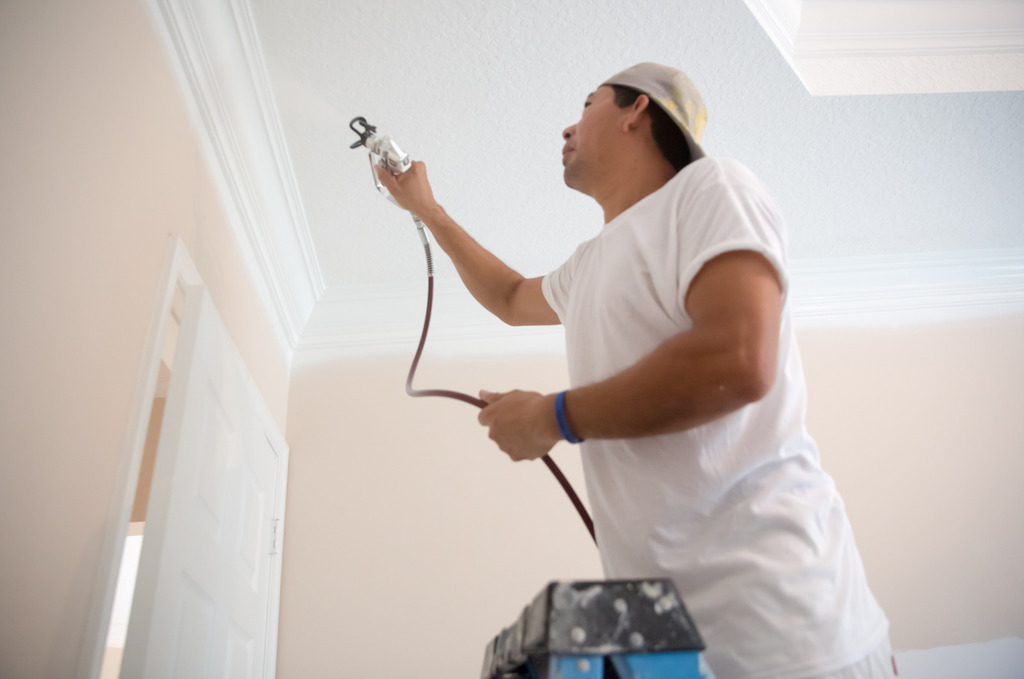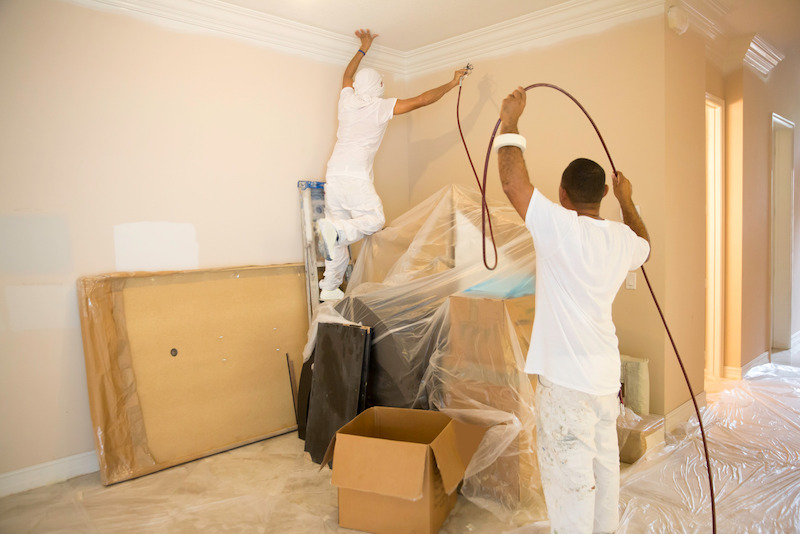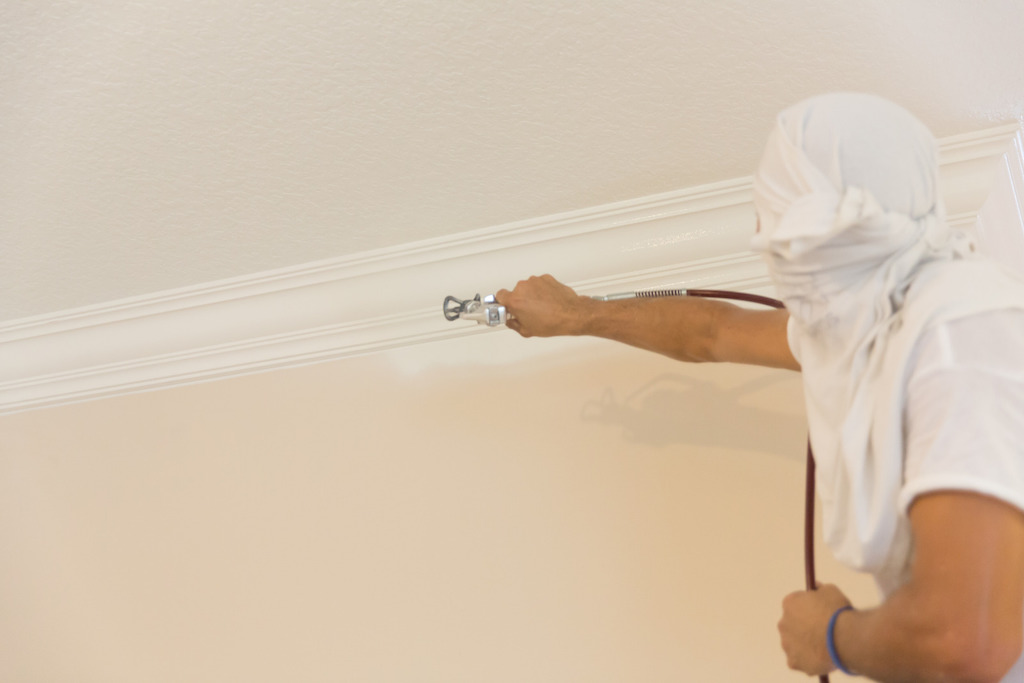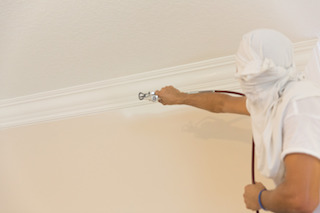
The good news is that putting together a home that leaves guests feeling cozy is actually easier than it seems. Crown molding is one of the easiest ways to make a house interior look and feel elegant. It offers a smooth and graceful transition between the ceiling and walls and other trims.
Related Post: Best Rope Lights For Crown Molding
So, when’s it best to paint crown molding?
When finishing a room’s interior for the first time, paint the crown molding before installation. It’s quicker, easier, and more effective. Moreover, you’ll hassle less when caulking and touching up the nail holes. On the other hand, when upgrading the crown molding in older rooms, paint it after installation. This way, it will stand out and be consistent with the other furnishings.
Do you Paint Crown Molding Before or After Installation?

Interior décor experts are divided on the most appropriate time to paint crown molding. Some believe that painting it before installation makes the job easier. This is because you don’t have to tape the walls and ceiling to prevent accidental paint splatter.
Other crown finish specialists believe that you should prime the molding before then paint it after installation. They argue that this brings out the best color finish. In this case, you only paint the molding after caulking and patching up the nail holes.
Generally, if the ceiling and walls are already painted, it’s best to paint the crown molding before installation. However, always paint the crown molding after installation in houses that need extensive caulking.
If your house has unpainted walls, it’s best to paint the crown molding after installation on the wall. It’s not only easier but also faster. Always paint the room from the ceiling, then the crown molding before going to the walls.
Then again, you can always choose when to paint your crown molding. Still, it’s best to apply the paint finish after nailing the crown molding in place. This way, you can apply the paint finish on both sides of the molding, thereby preventing it from warping. Moreover, it’s easier and faster to affix the pieces once they’re primed and painted.
Should I Paint My Crown Molding?
Definitely! You should paint the crown molding of your new or refurbished house for various reasons.
First, painting the crown molding frames the various components of the interior. This highlights the characteristics of your house furnishings and makes the room cozier.
Second, painting the crown molding transforms an entire room to your desired look. The upgrade may only be minor, but its effects can be surprising. For instance, painting the crown molding the same color as the walls makes the ceiling to appear higher.
Lastly, painting the crown molding makes the interior of a house more appealing to the eye. This minor upgrade can perk up the house’s quality and increase its resale value. As a result, prospective buyers are more likely to buy the property.
Can You Paint Over Crown Molding?

Nevertheless, the crown molding is a design and visual statement. As such, it should stand out from other architectural elements and furnishings. That’s why you should paint it over carefully for a refined and seamless look.
Follow these steps to successfully paint over your crown molding:
1. Determine the type of paint used to previously paint the crown molding.
If you paint over crown molding with latex or water-based paint over existing oil-based paint, the new layer will peel off. Wipe denatured alcohol onto the paint using a soft rag or sponge to determine the nature of crown molding paint used. Latex and water-based paint will stain the rag whereas oil-based paint doesn’t.
2. De-gloss the crown molding and trim
It’s best to paint over the crown molding with the same type of paint as the previous time. You can also use another paint type of your choice. To do this, you must first prime the crown molding surface using a primer that’s specific to the new paint type.
3. Wash the crown molding
The new paint can’t adhere properly to a soiled crown molding. That’s why it’s essential to clean it before repainting. You can wipe off dirt, grease, oil, and other grime using a clean sponge or cleaning rag and a mild domestic cleaner.
4. Scuff off old peeling paint
Remove the peeling paint using a sharp scraper to ready the crown molding for a fresh paint job. Remember to wear a face mask for protection against dried paint flecks. Dry paint flakes can irritate and harm your eyes and respiratory system.
5. Sand and vacuum the crown molding
Use 60-grit or 80-grit sandpaper to polish exposed portions of the crown molding. 120-grit sandpaper is the best to softly sand the molding. Further, smooth out the edges around the bare areas of crown molding for a uniform paint finish. Then, vacuum off the paint shards.
6. Install painters’ tape
Use painters’ tape to mask off the edges of the ceiling, walls, and other trims next to the crown molding. This not only enables you to achieve clean paint lines but also helps to avoid paint accidents.
Along with this, you can use canvas or plastic drop film cloths to cover your floor and walls. This way, the structures will stay clean and pristine in case of paint splatter.
7. Caulk and fill over nail punctures
Fill the nail holes and other blemishes on the crown molding using wood putty or other pore filler. Also, use a see-through acrylic paintable caulk to conceal any spaces between the crown molding and walls. Essentially, these practices conceal any ugly seams and give the molding a natural, flawless look.
8. Paint over the crown molding
Start by painting the top and bottom edges of the crown molding in straight lines where the walls meet the molding. Then, proceed to the middle section. Ensure you paint in sections to avoid visible brush strokes.
What Kind of Paint Do You Use on Crown Molding?

Ceiling paint is typically white or a shade of white with a flat finish. Thus, if you want your crown to be exactly the same, just use the same paint. Others recommend a different shade of white, but I think it comes down to personal preference. One thing is for sure, and that is some shade of white, (whether it matches the ceiling or not), is the most popular.
Whichever color you choose for the crown molding, ensure it’s a top-tier paint type that’s resistant to wear. Such paint is not only easier to clean but will also serve you for a long time before requiring a paint over job. Along with this, pet owners should choose a crown molding paint color that’s easy to clean.
Most crown finish experts advise homeowners to choose gloss paint for crown molding paint finish. The reasoning is simple: The walls and ceiling already have a flat paint finish. So, using gloss paint on the crown molding helps to distinguish it as a bold and unique visual highlight.
You can go with any of these 3 paint finishes on crown molding:
- High gloss paint- this is the shiniest and most resilient. However, it makes even tiny imperfections stand out
- Semi-gloss paint is preferable for crown molding paint jobs over the rest. It’s not only glittery but also conceals dings, wear, and other blemishes better than high gloss paint
- Satin finish paint is fast gaining traction in interior décor. Even so, it’s less radiant and less durable than gloss paint. Still, satin paint is the best paint choice for rustic and contemporary house designs where gloss paint appears out of place.
Final Thoughts
You may be wondering what all the fuss about painting crown molding is. Can’t I just paint it along with the ceiling and walls? Choosing the right time to paint crown molding might seem strenuous and time-consuming. Nonetheless, doing it right will save you time, cost, and the hassle of redoing the crown molding paintjob every now and then.
